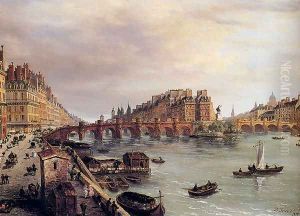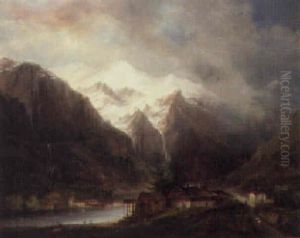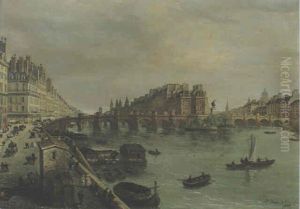Domenico Ferri Paintings
Domenico Ferri, often less known in the vast landscape of art history, was an Italian artist born in the late 18th century. His life spanned a period of significant change in Europe, witnessing the tail end of the Enlightenment, the Napoleonic Wars, and the rise of Romanticism and the early stages of modernity in the arts.
Ferri's work is not extensively documented, and as a result, he may not be as widely recognized as some of his contemporaries. However, like many artists of his time, Ferri would have been trained in the traditional methods of the day, which often included apprenticeships with established artists, and possibly study at an academy. His style would have been influenced by the dominant artistic movements of his time, possibly including Neoclassicism, which revered the art of ancient Greece and Rome, and Romanticism, which emphasized emotion and individualism.
Though there is limited information on his personal life and career, it is likely that Ferri created works that reflected the tastes and interests of his era. He may have produced historical scenes, portraits, landscapes, or religious works, which were all popular genres during the 19th century. His clientele would have consisted of the bourgeois class that was on the rise during this period, as well as possibly the church and aristocracy, who traditionally commissioned artworks.
Unfortunately, without more specific details on Domenico Ferri's body of work and contributions to the art world, it is challenging to provide a comprehensive biography. It is not uncommon for artists of a certain era, particularly those who did not achieve widespread fame, to remain somewhat obscure in the annals of art history. What remains clear, however, is that Ferri was part of a rich tapestry of 19th-century Italian artists who contributed to the cultural heritage of their time, even if their individual legacies are not thoroughly recorded or celebrated.


